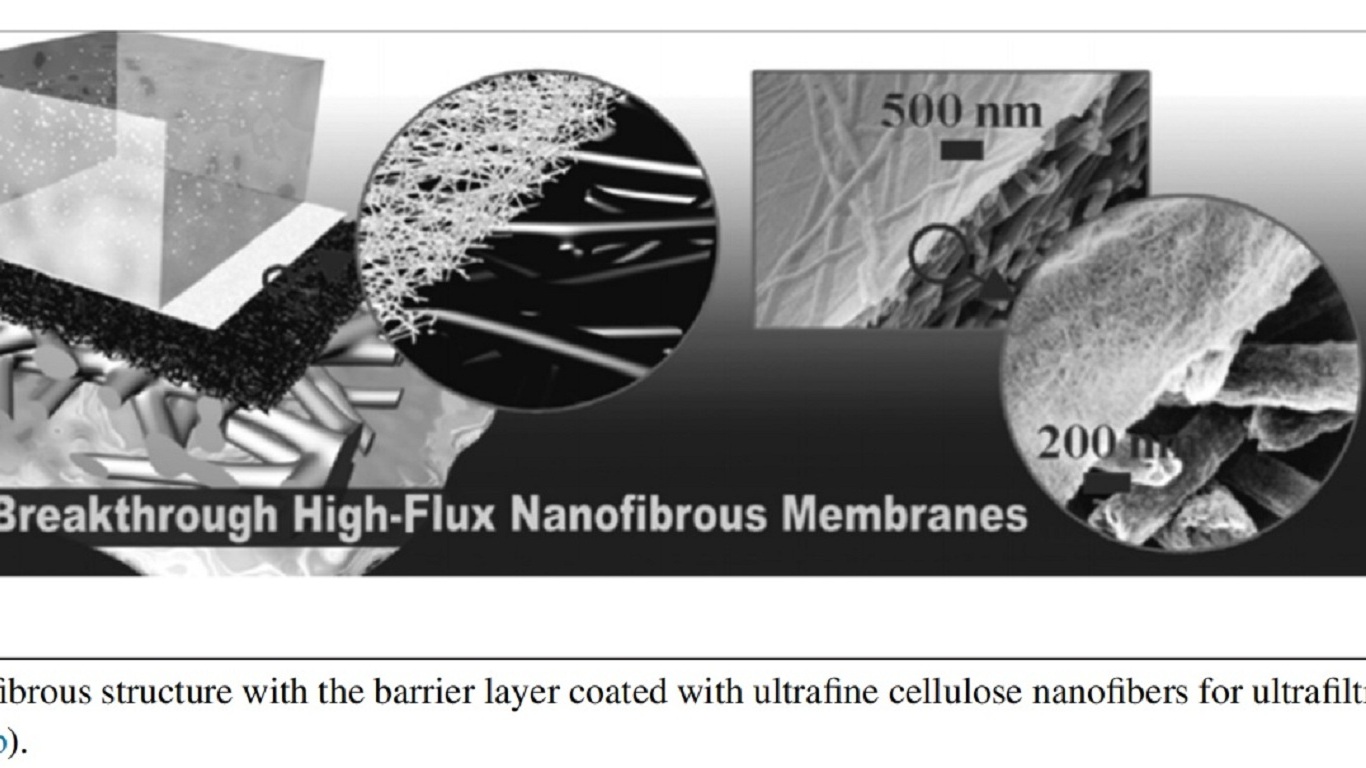In 2011, a unique TFNC UF membrane system with top barrier layers made of ultrafine poly-saccharide nanofibers (diameters 5-10 nm) was demonstrated by Chu and Hsiao’s group (Fig. 14.10). For example, ultrafine CNs with 5-nm mean fiber diameter were prepared from wood pulp. CNs could be formed into a gel and coated on the nanofibrous support. The relatively thin barrier layer thickness provided high water permeability. The flux of the CN-based TFNC UF membrane was 12 times higher than that of a commercial UF membrane for separation of oil emulsions and water, while retaining the same rejection ratio (above 99.5%). In addition, the hydrophilic surface of the CNs (the water contact angle was 10.9 degrees) might be very useful in alleviating fouling of filtration of oil/water emulsions.


